The concept described in this article seems so simple that it’s surprising no one has done it before: mapping the masses and radii of all categories of objects, from subatomic particles to superclusters of galaxies, onto a global map.
Now Dr. Charles Lineweaver and graduate student Vihan Patel finally made it happen, the results raises some very intriguing and perhaps even disturbing questions.
Lineweaver and Patel used a logarithmic plot because nothing else could cover such a wide range of values, both in size and mass. Some areas are completely ‘forbidden’ by the known laws of physics, and this is where quantum mechanics comes into play.
“Quantum mechanics blurs the nature of what it really means to be a single object [referring to fundamental particles],” said Patel.
Perhaps the most important part of the diagram (below) is the black line that separates the area labeled “forbidden by gravity” from the space populated by known objects. Black holes are located along this line.
“The more mass a black hole has, the lower its density,” Lineweaver explains.
Although the left side of the line is theoretical, astronomers have observed a range of black hole sizes, from the remnants of collapsing stars to the largest supermassive black holes. So this pattern has been identified and understood.

However, if we follow the line upwards, we learn that the entire observable universe – the region within the Hubble radius (volume) – is also on this line.
In other words, if a black hole were the same size as the universe we see, it would have the same density as the universe. Maybe our universe is a gigantic black hole? If the answer is yes, what does that mean?
Lineweaver noted that he and Patel are not the first scientists to wonder whether the entire universe could be a black hole, although others have come to this idea in other ways.
The measure of mass chosen by Lineweaver and Patel includes dark matter and dark energy (since energy and mass are interchangeable). As the universe expanded within the Hubble radius, its total mass/energy also increased due to the increase in dark energy.
Billions of years ago, when Hubble’s radius was much smaller, the universe was also in the line of black holes, so its position is unlikely to be a mere coincidence.
Lineweaver notes that an event horizon exists around the observable universe (meaning that 94% of the galaxies in the universe are perpetually beyond our reach), just as there exists around a black hole, and this is just one of the parallels between them.
However, Lineweaver also emphasized that because the universe is a black hole, it requires the assumption that everything outside the Hubble radius is zero-density Minkowski space (roughly a vacuum). Most cosmologists, including Lineweaver, consider this a bad assumption, leaving the implications of their world map unclear.
“The universe could be an inside-out black hole,” he added.
Overall, the scientist believes that this issue requires much more attention.
The obstacle to answering the question of whether the universe is a black hole, or at least something related to it, is that we know nothing about the inner workings of black holes. As Stephen Hawking and Roger Penrose noted, general relativity and quantum mechanics provide different answers to such questions, and this contradiction has not gone away.

The map also raises questions about the nature of the universe’s beginnings. “On the smaller side, the place where quantum mechanics and general relativity meet is the smallest possible object – an instanton,” Patel said.
“This plot suggests that the universe may have started out as an instanton, which has a specific size and mass, rather than as a singularity, which is a hypothetical point of infinite density and temperature.”
Instanton is a special kind of fluctuation of a quantum field in a vacuum, in which a strong gluon field spontaneously flares up and goes out.
Although the term “singularity” is much more associated in the public consciousness with the Big Bang, Lineweaver said people should become more familiar with the instanton, which he sees as a more plausible model for the origin of the universe.
The research has been published open access in the American Journal of Physics.






